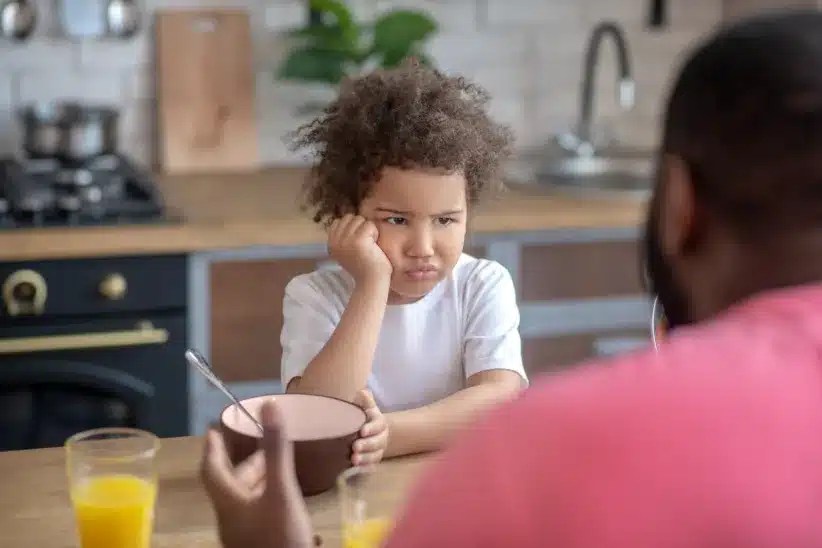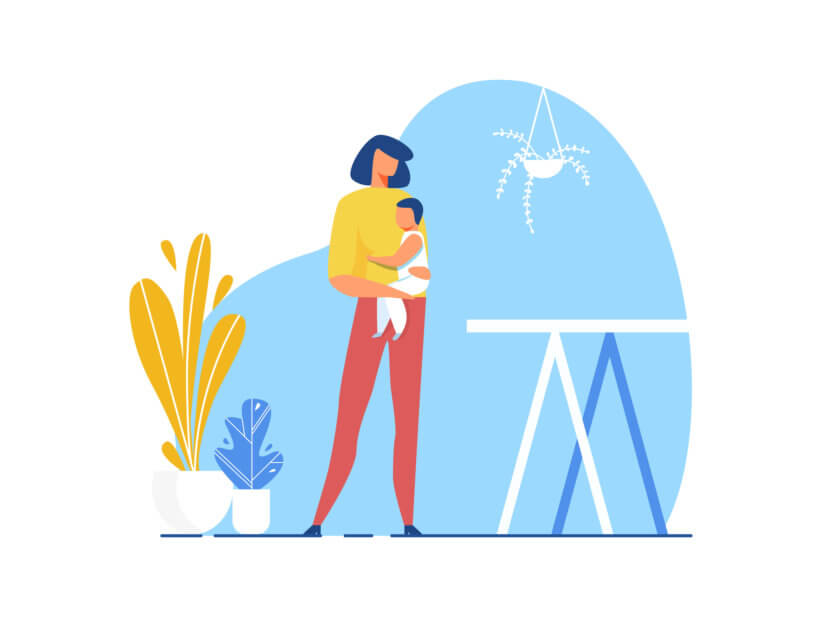
Every parent remembers the incredible moment when they first looked into their newborn baby’s eyes. Words can’t capture the intense connection, looking into a pool of endless possibilities. Who is the person in there? I see them, but can they see me? Are the details of my face sharp, blurry, in black and white or full color? Can they see the dog? The yellow duck in the tub?
Babies learn to see in steps, just like they learn to crawl, walk, and run. Vision is something parents may take for granted, but focusing, using the eyes together, and processing visual information in the brain are all accomplishments for an infant. There’s so much for us as parents to learn about the development of vision, and it is an incredible process to witness over the first year of life.
Scientists know a great deal about baby’s visual development. Sharpness of vision, for example, increases from 20/400 at birth to 20/25 at 6 months, clearly a transformative experience for the baby. At birth the baby’s eyes are already 65 percent of their adult size! The major stages described here are a brief overview. Keep in mind, all babies develop on their own time-frame but the stages are always the same. Here are some patterns you may notice:
0-3 Months
- Up to 3 months, babies can focus only up to 8-10 inches away, the distance of a mother’s face when nursing
- At 2 months, babies may look cross-eyed because the eyes are not well coordinated.
- At 3 months, babies begin to follow moving objects with eyes which is the first step in hand/eye coordination as they reach for things they see; they also study hands and feet.
- By 4 months they begin to see red, orange, yellow, and green but it takes longer for blue and violet to set in. Black, white, and grey are predominant.
5-8 Months
- At 5 months, depth perception sets in with eyes working together to create a three dimensional world; babies can also focus across the room.
- Increased hand/eye coordination allowing them to feed themselves a bottle and mouth lots of other things as well.
- As babies begin to crawl around 8 months their eye/hand/foot coordination sets in and crawling is crucial to the development of vision, as children explore their world.
- Babies are increasingly interested in peoples’ faces up until 9 months when interest becomes constant.
9-12 Months
- Babies begin to use eyes and hands together.
- As they learn to crawl and walk, they can judge distances better.
- Babies start to develop interest in pictures.
- Babies notice small crumbs and other things and try to grab them.
- They recognizes partly hidden objects/people and play hide and seek.
Here are some things you can do to help develop baby’s vision:
- Spend face time close to your baby in the first three months, talking or singing to help them focus.
- Provide different vantage points by periodically moving baby to different parts of the room, shifting the crib placement for example.
- Offer objects just out of reach, such as a colored cloth they can track and then grab.
- Read books with your baby, especially those with captivating illustrations or photos.
- Allow baby to crawl before walking so they can develop hand/eye/foot coordination.
- Play games that invite an infant to track an object visually, from simply moving your fingers back and forth several inches from their face to playing pat a cake to hide and seek.
Most importantly, take your baby for a six month check up with a pediatric ophthalmologist to make sure the eyes are developing properly. Although the pediatrician routinely checks eyes at each visit, specialists have in depth knowledge that can be essential in identifying problems. In 2005, the American Optometric Association established the InfantSEE program which offers children a free eye exam in the first year of life. At this time a doctor can identify lazy eye, misaligned eyes, crossed eyes, nearsightedness, farsightedness, and even cancer. Interventions for very young children have a profound and more rapid impact, for example if a child’s eyes are not working as a team, if one eye is being favored, etc. In particular, if a child does not make eye contact it could be an indication of autism and early detection is key to getting services and the help you need.
When a new baby arrives we see the beauty of the world anew. We can’t wait until he can explore and she can use her senses to learn and grow. We want our babies to enjoy life to the fullest, starting with the perfect vision that is crucial to early experience. The baby’s eyes are a window of the soul, and also a window onto the world and all it has to offer. We are excited to witness the baby’s growing amazement as they begin to master an ever widening domain.
Renee Bock is a dedicated early childhood educator, who is currently the Chief Academic Officer at Explore+Discover, a social learning center in Manhattan that is committed to setting the standard for infant and toddler care and education. Renee has more than a decade of experience in the field and holds a Master’s in Early Childhood Education from Bank Street College in New York. She has three sons, Ariel (16), Raffi (14), and Shaya (13). She can be reached at [email protected].





















